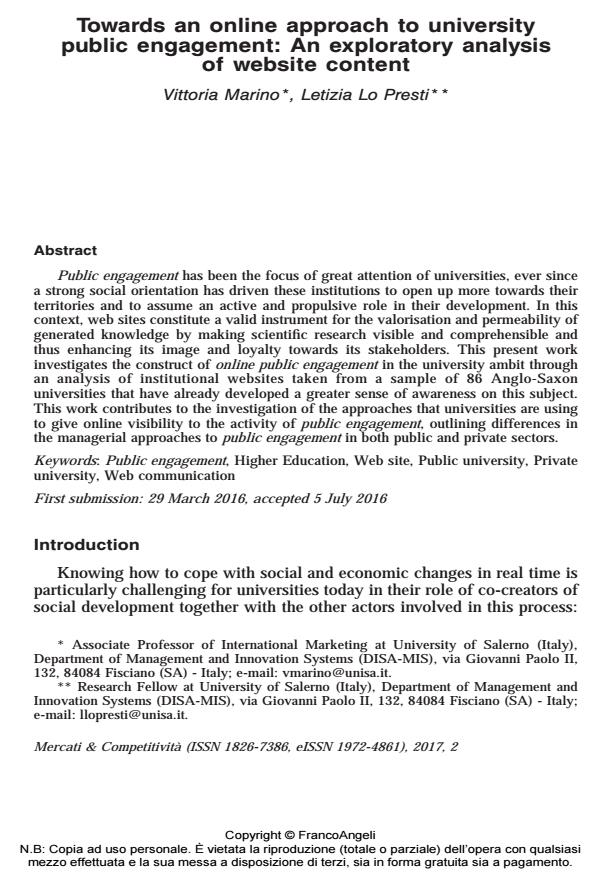Towards an online approach to university public engagement: An exploratory analysis of website content
Journal title MERCATI & COMPETITIVITÀ
Author/s Vittoria Marino, Letizia Lo Presti
Publishing Year 2017 Issue 2017/2
Language English Pages 24 P. 75-98 File size 487 KB
DOI 10.3280/MC2017-002005
DOI is like a bar code for intellectual property: to have more infomation
click here
Below, you can see the article first page
If you want to buy this article in PDF format, you can do it, following the instructions to buy download credits

FrancoAngeli is member of Publishers International Linking Association, Inc (PILA), a not-for-profit association which run the CrossRef service enabling links to and from online scholarly content.
Public engagement has been the focus of great attention of universities, ever since a strong social orientation has driven these institutions to open up more towards their territories and to assume an active and propulsive role in their development. In this context, web sites constitute a valid instrument for the valorisation and permeability of generated knowledge by making scientific research visible and comprehensible and thus enhancing its image and loyalty towards its stakeholders. This present work investigates the construct of online public engagement in the university ambit through an analysis of institutional websites taken from a sample of 86 Anglo-Saxon universities that have already developed a greater sense of awareness on this subject. This work contributes to the investigation of the approaches that universities are using to give online visibility to the activity of public engagement, outlining differences in the managerial approaches to public engagement in both public and private sectors.
Keywords: Public engagement, Higher Education, Web site, Public university, Private university, Web communication
Vittoria Marino, Letizia Lo Presti, Towards an online approach to university public engagement: An exploratory analysis of website content in "MERCATI & COMPETITIVITÀ" 2/2017, pp 75-98, DOI: 10.3280/MC2017-002005